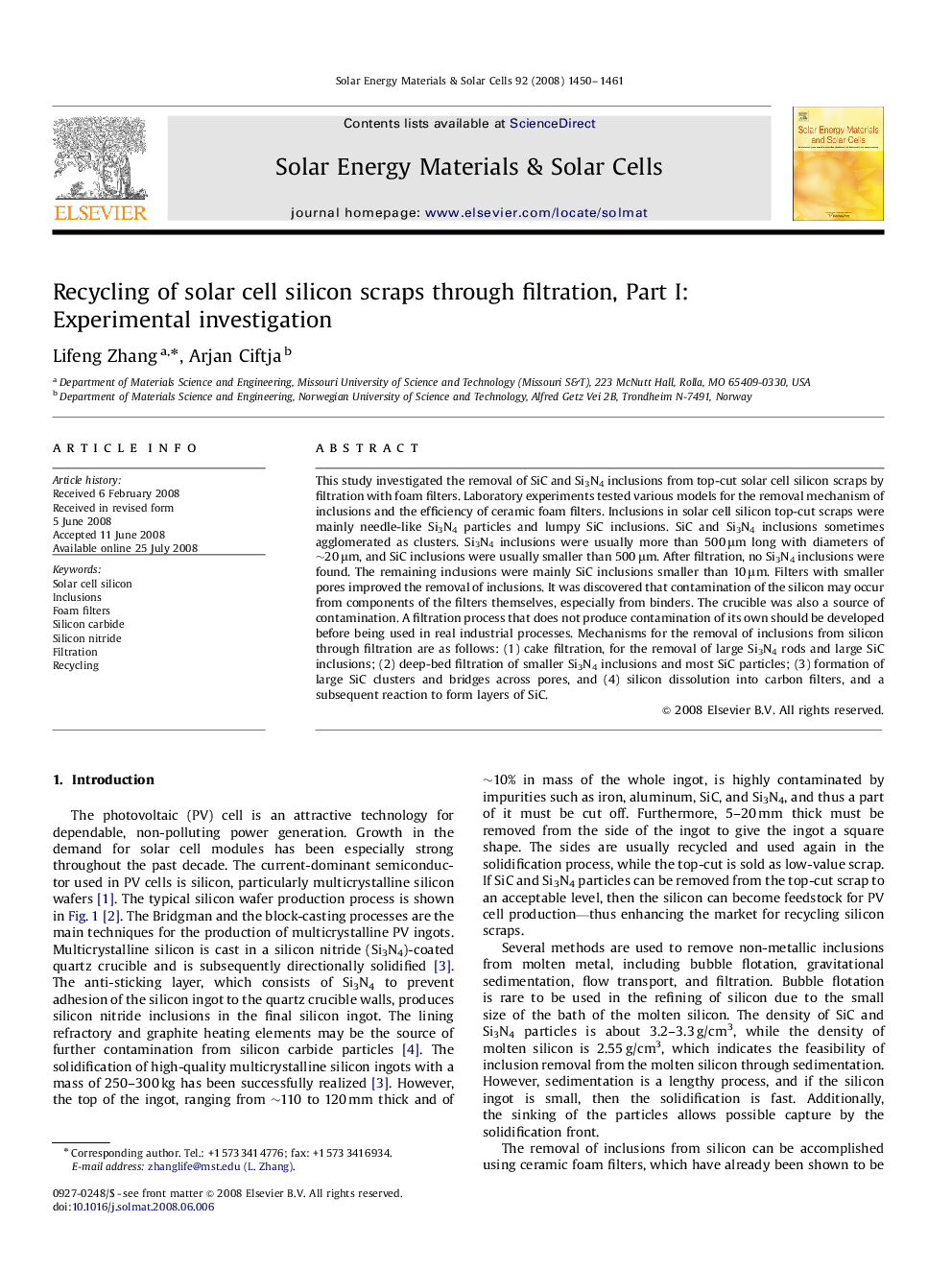| Article ID | Journal | Published Year | Pages | File Type |
|---|---|---|---|---|
| 80338 | Solar Energy Materials and Solar Cells | 2008 | 12 Pages |
This study investigated the removal of SiC and Si3N4 inclusions from top-cut solar cell silicon scraps by filtration with foam filters. Laboratory experiments tested various models for the removal mechanism of inclusions and the efficiency of ceramic foam filters. Inclusions in solar cell silicon top-cut scraps were mainly needle-like Si3N4 particles and lumpy SiC inclusions. SiC and Si3N4 inclusions sometimes agglomerated as clusters. Si3N4 inclusions were usually more than 500 μm long with diameters of ∼20 μm, and SiC inclusions were usually smaller than 500 μm. After filtration, no Si3N4 inclusions were found. The remaining inclusions were mainly SiC inclusions smaller than 10 μm. Filters with smaller pores improved the removal of inclusions. It was discovered that contamination of the silicon may occur from components of the filters themselves, especially from binders. The crucible was also a source of contamination. A filtration process that does not produce contamination of its own should be developed before being used in real industrial processes. Mechanisms for the removal of inclusions from silicon through filtration are as follows: (1) cake filtration, for the removal of large Si3N4 rods and large SiC inclusions; (2) deep-bed filtration of smaller Si3N4 inclusions and most SiC particles; (3) formation of large SiC clusters and bridges across pores, and (4) silicon dissolution into carbon filters, and a subsequent reaction to form layers of SiC.
